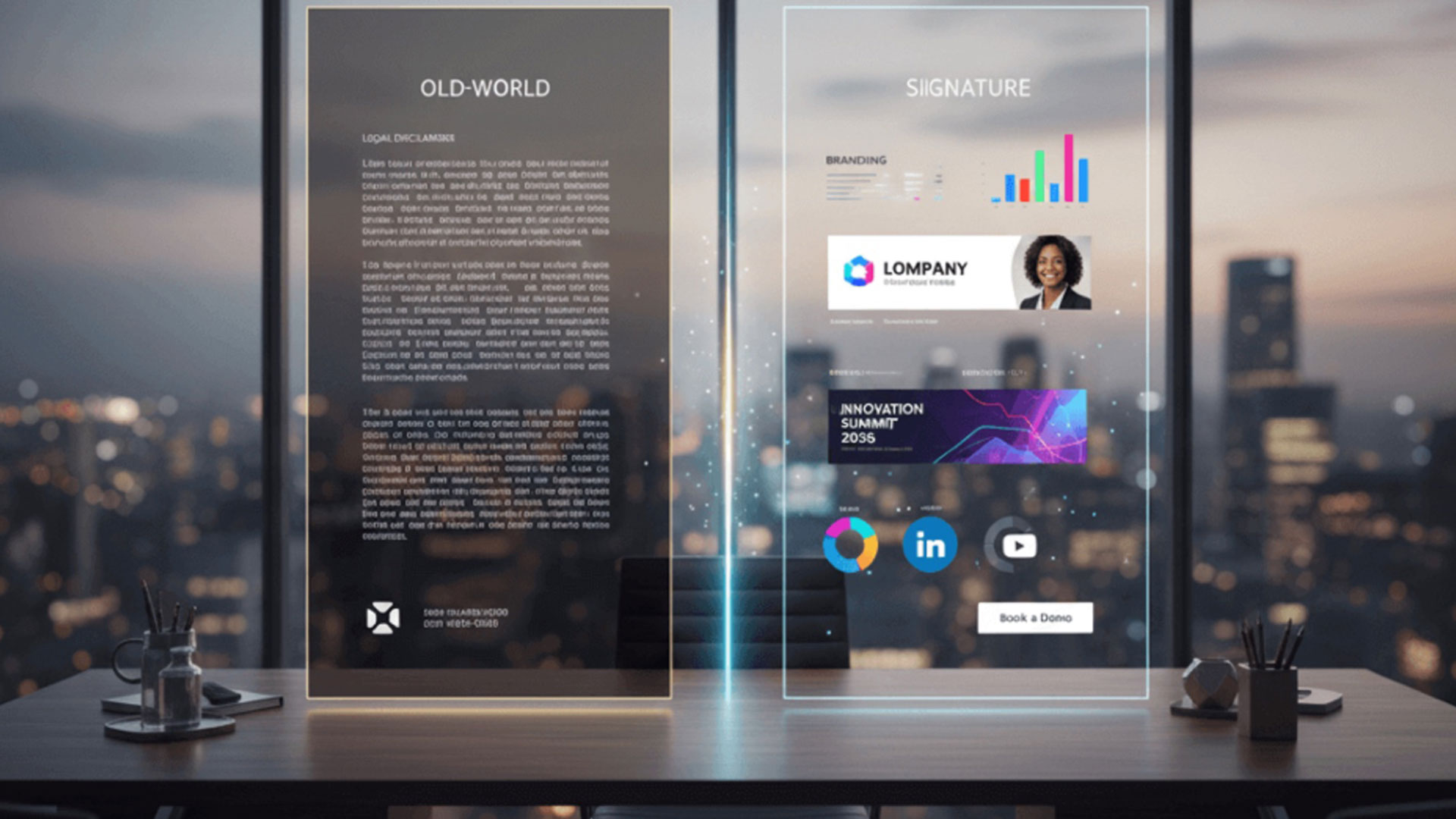How to create, control and implement company-wide email signatures

In an age where Slack pings and in-product notifications fight for eyeballs, the plain-old email footer rarely tops a C-suite agenda. Yet every business message you send carries a clickable billboard for your brand, a legally binding disclaimer, and—increasingly—a measurable marketing channel.
This is why it is critical for the executive team both from a brand and technology management perspective to take a key interest in this critical business communications tool.
Globally, the worldwide email user base sits at roughly 4.48 billion people and will pass five billion by 2028. This equates to around half of the total worldwide population. This means that you need to consider one critical factor in terms of how important a communications tool the email signature can actually be for your business. That is, volume is on your side: if each employee sends even 40 external emails a day, a 250-person firm generates 2.5 million branded impressions a year. The opportunity (and the risk) sits in your signature block to provide potential clients/customers a clear representation of key company information, as well as a tool for them to engage with your brand.
The Business Case: Tiny Real Estate, Massive ROI
Marketing teams spend heavily on ads that struggle for a single second of attention, yet an email footer enjoys an average nine-second reading window—the same as the body of the message itself.
When every banner, social icon, or CTA beneath your name is centrally aligned with the campaign calendar, you create a zero-cost demand-generation channel that scales with head count. Meanwhile, legal teams sleep easier knowing that every outbound message carries the latest privacy disclaimer or ISO certification text—no rogue copy-pasting required.
Put simply, the email signature is the only piece of corporate branding that travels with every frontline employee, every day. Treat it with the same rigour you apply to your website header.
The Scale Problem: Brand, IT and Compliance Collide
Getting 25 people to copy-paste a new footer is tedious; getting 25,000 is impossible. Brand managers want pixel-perfect HTML signatures, IT administrators want zero help-desk tickets, and compliance officers need an auditable trail of every change.
Common Challenges:
- Inconsistent HTML rendering across desktop, mobile, and web clients.
- Employee “creative flair.” One extra emoji can derail the brand cookbook.
- Regulation drift. GDPR, CCPA, and industry-specific rules mandate wording updates that must go live instantly.
How HTML Signature Generators Solve The Trilemma
Modern online email signature builders provide each stakeholder what they need:
- Centralised control. A cloud dashboard lets marketing push brand updates globally without touching a single mailbox.
- Directory integration. The tool pulls titles, phone numbers, and pronouns straight from Azure AD or Google Workspace, eliminating manual edits.
- Rule-based segmentation. IT can assign different legal disclaimers to regions or attach campaign banners only for sales teams.
- Security by design. Changes flow through secure APIs; nothing sits on the user’s device, reducing the attack surface.
- Real-time analytics. Click-through reports turn every footer into a trackable micro-campaign.
With these features, HTML signature generators become the connective tissue between brand ambition and IT reality.
Best-practice Roll-out: From Pilot to Audit Trail
Start small, test hard. Launch a two-week pilot with a cross-functional squad—marketing, IT, compliance, and a handful of power users. Validate rendering across popular clients (Outlook, Gmail, Apple Mail) and devices.
Automate onboarding. Tie signature provisioning to your identity-and-access workflow so new hires never send a “naked” email.
Lock the design, free the data. Marketing owns fonts, colours, and banners; employees own only their contact fields.
Maintain an audit log. Compliance leads should be able to produce a timestamped history of every disclaimer change, essential in regulated sectors such as finance and healthcare.
Real-World Wins
- Managed Services Providers (MSPs): Offering a white-label signature platform adds a high-margin, low-touch revenue stream and deepens stickiness with SMB clients.
- CTOs: One Fortune 500 retailer slashed 80 hours of help-desk tickets a month after automating signature changes.
- Compliance leads: A global law firm achieved 100 percent disclaimer consistency across 32 jurisdictions within 48 hours of deployment.
How Does Crossware Help Your Business
Ready to turn thousands of everyday emails into brand-safe, compliance-ready marketing assets? Reach out to Crossware today and see how an enterprise-grade HTML signature builder can transform the smallest space in your emails into your most scalable marketing channel.
50-Word LinkedIn Summary
Email signatures are a hidden goldmine. With 4.5 billion email users and employees sending 40 messages daily, centrally managed HTML signatures deliver massive brand impressions, airtight compliance and measurable ROI. Discover how cloud-based signature generators solve brand, IT and legal headaches—then talk to Crossware to get started.











